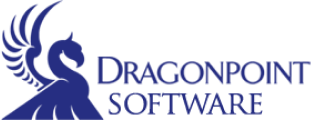You’ve worked with your consultants designing your custom software solution, you’ve given feedback on screens and system modules, and you’ve even been able to try out parts of the system. Once the application has been through system testing, it is ready for beta software installation.
During the beta installation phase, your consultants will come to your site and install the beta software. This part of the custom software project can be motivating because everyone at your business can see how your software application will help you to achieve your business objectives and streamline your processes.
Beta Software Installation.
If the custom application is new, the installation should be fairly straightforward. If the custom application replaces an existing system, you will need to convert from the old system to the new system. You can complete this conversion in one of two ways; you can perform a parallel operation or an immediate replacement operation. During a parallel conversion, you maintain the existing system until the new system is up and running. You have the most flexibility during a parallel conversion as you can use the output from the new system, check it against the output from the existing system, and if necessary, revert to the existing system at any time. Additionally, you can use the old system until all your employees are fully trained on the new system.
Sounds great? Remember that parallel means two. You will be maintaining two systems (for example, entering data twice) if you choose a parallel conversion.
During an immediate replacement conversion, you shut down the old system and start using the new system. While an immediate conversion may be riskier than a parallel conversion, you may need to convert immediately for one or more of the following reasons:
- You may not have the time and resources to run two systems simultaneously.
- The process the system automates may not be so important that it won’t be a disaster if the new system is down for a period of time.
- It may be too expensive to run two systems concurrently.
- The new system may be so different from the old system, that it doesn’t make sense to run both systems in parallel.
Customer Training.
Before you can use the custom application however, you will need to receive some training. Two types of training are needed: training for using the application and training for maintaining the application. In addition, the training that you receive varies depending on the size of the system, the number of people who need to be trained, and whether or not the system is a new system or a replacement for an existing system. The training can take place in many forms including classroom training, one-on-one training, and computer-based training.
How to Get the Most Out of Training
- Make sure you give your employees the time to dedicate exclusively to training. If an employee is distracted by trying to complete training and complete other tasks, the training will not be successful.
- Make sure your employees know how the training will help them so that they will be motivated when attending the training.
- Prepare for the training by reading any preparatory information and by developing a list of questions you want to have answers to by the end of the training.
- Make sure there are enough breaks during the training to keep attention focused.
- Make sure that you not only learn how to use the system, but how to work around errors. Ask the trainer to show you the most common errors that can occur and how to solve them.
- Ask questions. Remember, there is no such thing as a dumb question, only dumb answers.
The user training will be for people who will be operating the application. If the new system replaces a previous manual process, a correlation between each old manual process and each new computer process needs to be established. If the new system replaces an existing system, again a correlation between the new and old processes needs to be documented. If the new system doesn’t replace an existing system, the training needs to include instructions on how to operate the system and how to use the processes that the system automates.
Training will help users see how the new custom application can help your business run more efficiently and therefore remain competitive in the marketplace.
The maintenance training, if necessary, will be for people who will be keeping your custom application up to date. You may choose to have your consultants perform maintenance, and if so, you may not need maintenance training. However, if you will be doing system maintenance yourself, you may be trained in a variety of functions including such things as troubleshooting, installing upgrades, and system backup.
Customer Site Testing and Feedback.
As we discussed in Issue No. 6 of Info Point, site testing is done at your site with your employees using your equipment and your data. There is no simulation during site testing. You and your employees can test the system to make sure the custom application accurately reflects your business processes. Site testing may also uncover additional bugs that had not been discovered previously. Once you have worked with the new application, you can provide additional feedback to your consultants about the system. Changes can be made at this point. However, remember that any change at this point will affect the cost and schedule of the project; the larger the change the larger the impact to both these parameters.
With custom beta software, you get an application that fits your unique needs by automating your existing business processes. Since you are involved in the custom software development project from beginning to end, you can make sure that your custom application will help your business move forward, not hinder it from doing so. And when you need changes, upgrades, and expansions to continue to grow your business, custom software positions you to make these changes when you need them.
Ready to optimize your business with a custom software solution? Consult DragonPoint today for tailored technology that aligns with your unique objectives and ensures sustained growth.




